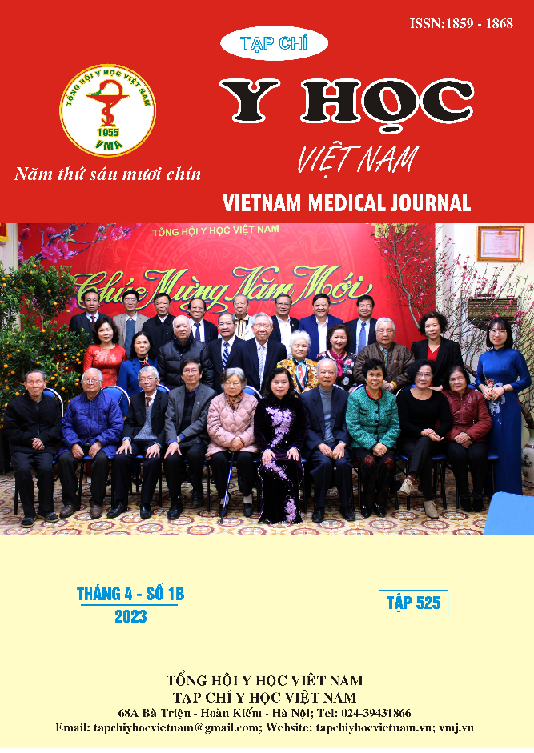MICROBIOLOGICAL PROFILE AND PATTERNS OF ANTIMICROBIAL RESISTANCE OF PATHOGENS IN EMPHYSEMATOUS PYELONEPHRITIS
Main Article Content
Abstract
Background: Emphysematous pyelonephritis is an acute and life-threatening urinary infection. Escherichia coli, Klebsiella pneumoniae are the most common pathogens. The initial use of empiric antibiotics guided by individual’s medical state as well as the patterns of local antibiotic resistance plays an important role in order to reduce mortality rate. Objective: To describe microbiological profile and analyze patterns of antimicrobial resistance of pathogens in emphysematous pyelonephritis (EPN). Methods: A retrospective descriptive case series study was performed at Cho Ray hospital from January 2011 to December 2019. Results: Of 176 cases of EPN reported, the pathogens isolated rate in urine, blood, and pus cultures were 40.9%, 23.5%, and 66.2%, respectively. E. coli is the most common organism isolated (83.3%), followed by K. pneumoniae (9.9%) and Enterococcus faecalis (1.5%). There were 2 cases of EPN caused by Candida. Extended spectrum β-lactamase (ESBL) producing bacteria accounted for 57.5% of EPN cases. The sensitivity rate of E.coli and K. pneumoniae Less than 30% of E. coli, and 40 - 60% of K. pneumoniae were sensitive to quinolone and third-generation and fourth-generation cephalosporins. The carbapenems are the antibiotic drugs with high efficiency (>90%). Conclusion: E.coli and K. pneumoniae were the most common causative agents. Antibiotic resistance is a concerning issue. Clinicians should pay more attention to the use of antibiotics according to the correct regimen in order to prolong the duration of the antibiotics' effectiveness and avoid increasing the incidence of drugs resistance.
Article Details
Keywords
Emphysematous pyelonephritis(EPN), diabetes mellitus, antimicrobial resistance
References
2. Ngô Xuân Thái, Vũ Đức Huy, Hoàng Khắc Chuẩn, Thái Kinh Luân (2014) "Báo cáo 22 trường hợp nhiễm trùng đường tiết niệu nặng: viêm thận bể thận sinh khí tại bệnh viện Chợ Rẫy". Y học thành phố Hồ Chí Minh, 18 (4), 59-65.
3. Aboumarzouk O. M., Hughes O., Narahari K., Coulthard R., Kynaston H., Chlosta P., et al. (2014) "Emphysematous pyelonephritis: Time for a management plan with an evidence-based approach". Arab Journal of Urology, 12 (2), 106-115.
4. Hsueh PR, Hoban DJ, Carmeli Y, et al. Consensus review of the epidemiology and appropriate antimicrobial therapy of complicated urinary tract infections in Asia-Pacific region. J Infect. Aug 2011;63(2):114-23. doi:10.1016/ j.jinf.2011.05.015
5. Lu Y-C, Hong J-H, Chiang B-J, et al. Recommended Initial Antimicrobial Therapy for Emphysematous Pyelonephritis: 51 Cases and 14-Year-Experience of a Tertiary Referral Center. Medicine. 2016;95(21):e3573. doi:10.1097 /md.0000000000003573
6. Morrissey I, Hackel M, Badal R, Bouchillon S, Hawser S, Biedenbach D. A Review of Ten Years of the Study for Monitoring Antimicrobial Resistance Trends (SMART) from 2002 to 2011. Pharmaceuticals (Basel). Nov 1 2013;6(11):1335-46. doi:10.3390/ph6111335
7. Somani B. K., Nabi G., Thorpe P., Hussey J., Cook J., N'Dow J. (2008) "Is percutaneous drainage the new gold standard in the management of emphysematous pyelonephritis? Evidence from a systematic review". J Urol, 179 (5), 1844-1849.


